Abstract
PURPOSE: To describe a group of patients with limbal stem cell (SC) deficiency without prior diagnosis of a specific disease entity known to be causative of SC deficiency. METHODS: We performed a retrospective review of the records of all patients with ocular surface disease presenting to the University of Minnesota between 1987 and 1996. Patients were categorized according to etiology of limbal deficiency. Patients who did not have a specific diagnosis previously described as being causative for limbal deficiency were analyzed. Risk factors, clinical findings and sequelae were evaluated. RESULTS: Eight eyes of six patients with stem cell deficiency not secondary to a known diagnosis were described. All eyes had prior ocular surgery involving the corneoscleral limbus. Six eyes had been on chronic topical medications and all eyes had concurrent external disease such as pterygium, keratoconjunctivitis sicca, rosacea or herpes simplex virus keratitis. All eyes had superior quadrants affected corresponding to areas of prior limbal surgery. Sequelae of disease included corneal scarring and neo-vascularization, and five eyes had with visual acuity of 20/200 or worse. CONCLUSIONS: Because the epitheliopathy started peripherally and extended centrally in all patients, we feel it represents a stem cell deficiency. The fact that all patients were affected superiorly, at sites of a prior limbal surgical incision, points to surgical trauma to the SC as the likely major etiologic factor for the deficiency. The surgical trauma to the limbal SC probably made these cells more susceptible to damage from other external disease influences and toxicity from chronic topical medications. Because the stem cell deficiency is secondary to prior ocular surgery and chronic topical medications, we propose the term "iatrogenic limbal stem cell deficiency".
Full text
PDF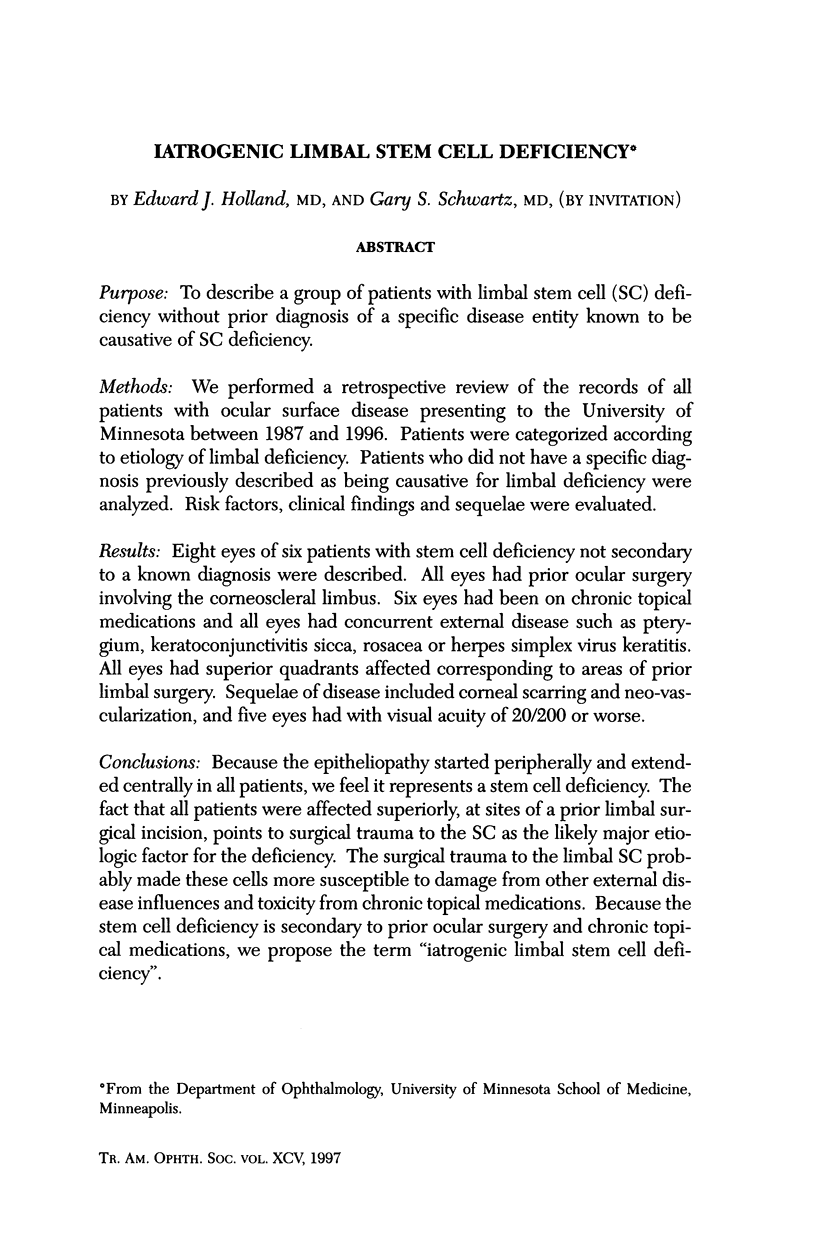
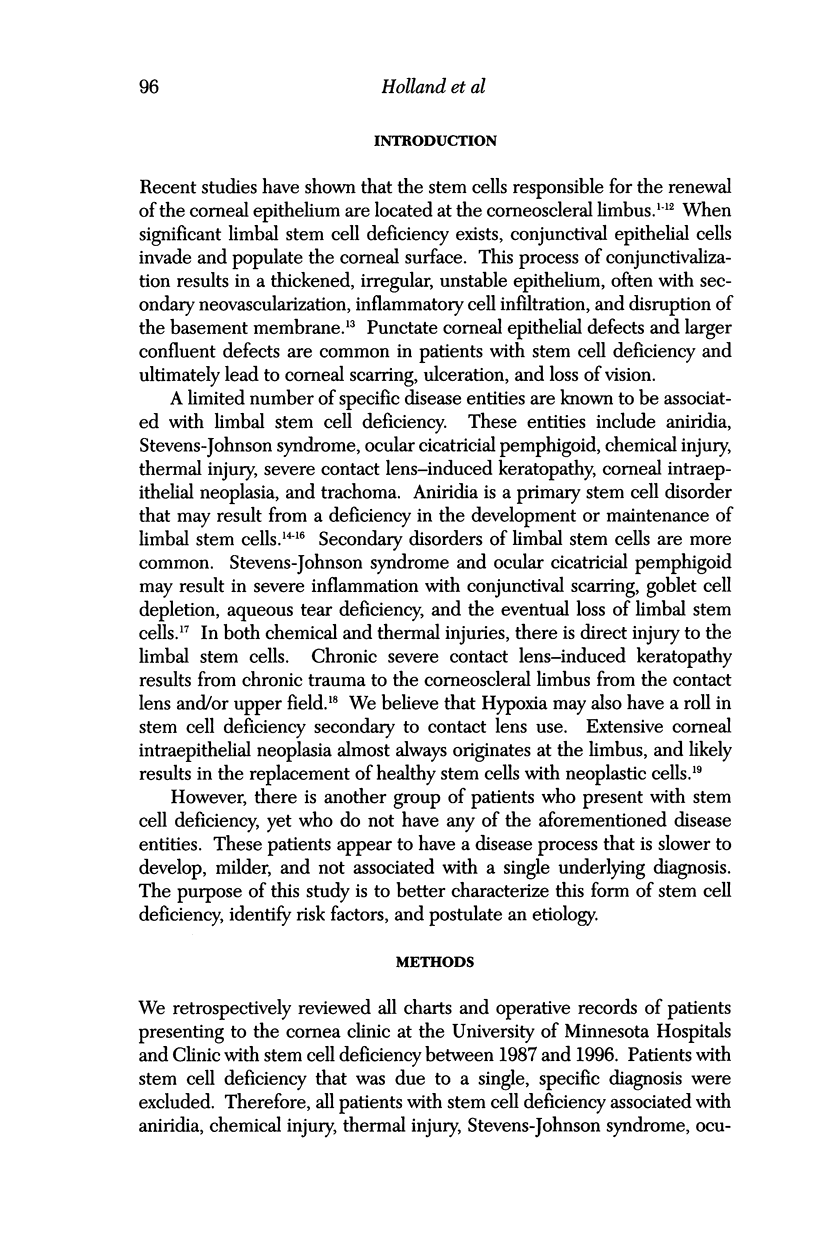
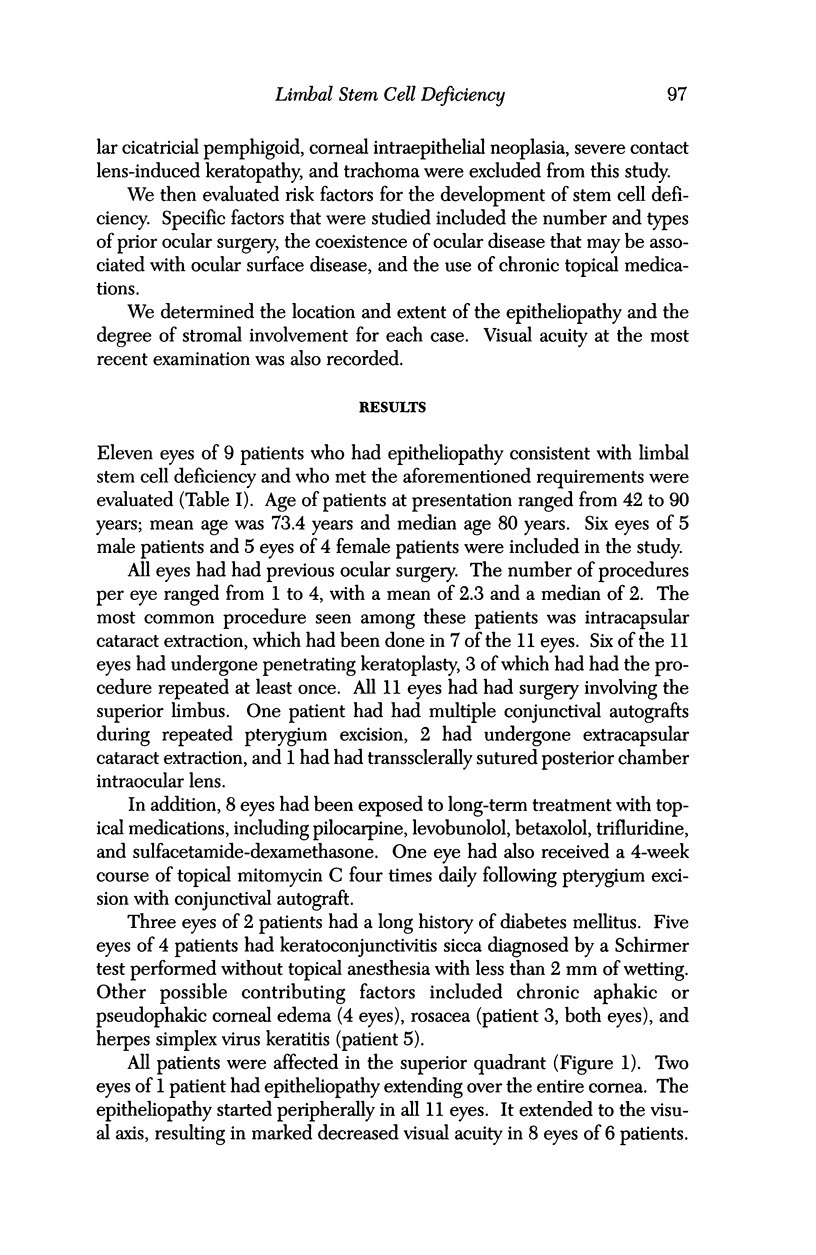
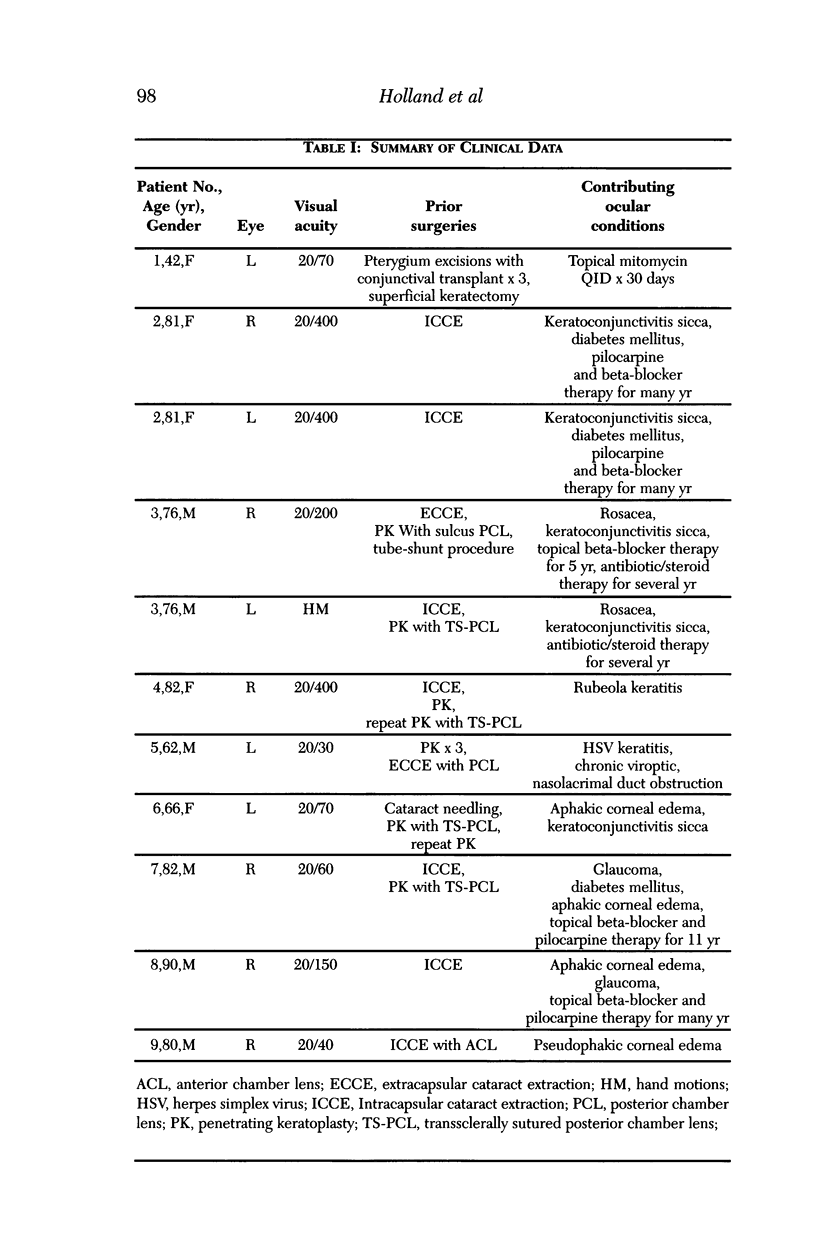
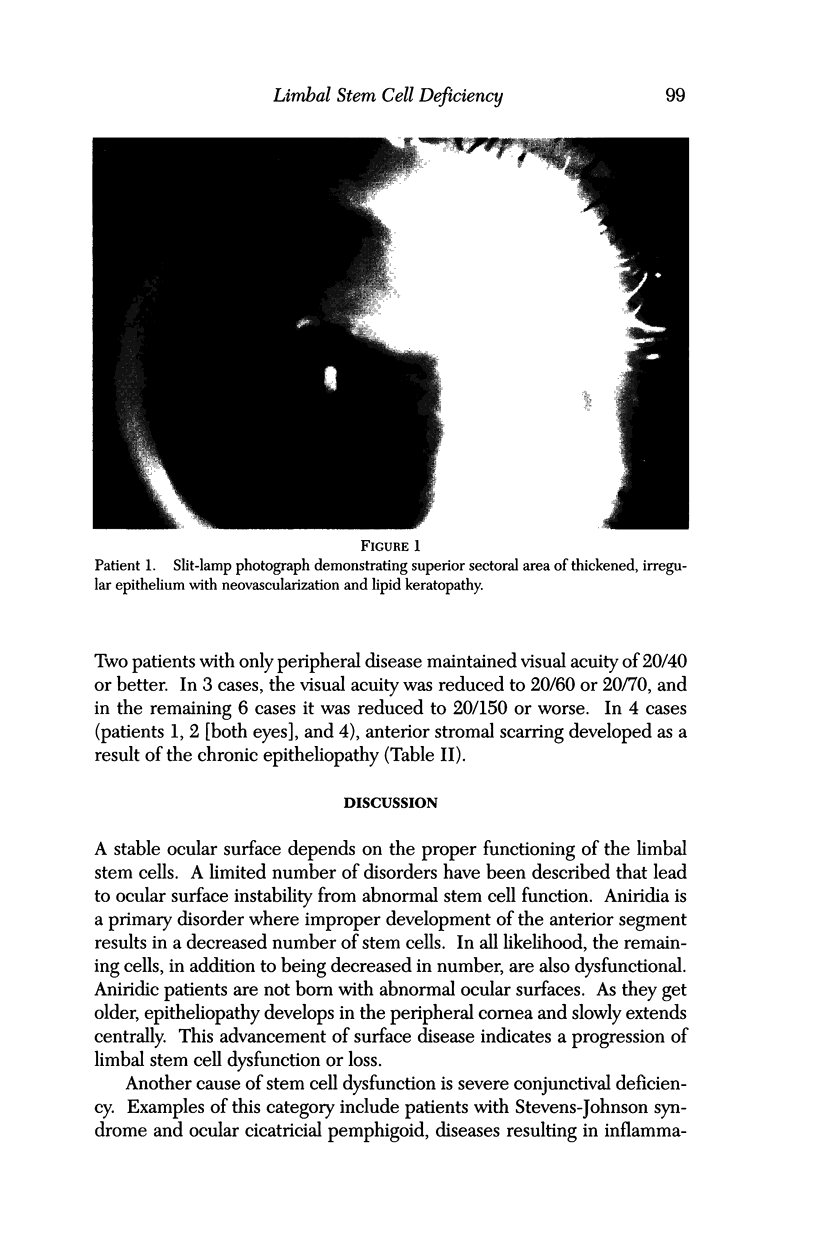
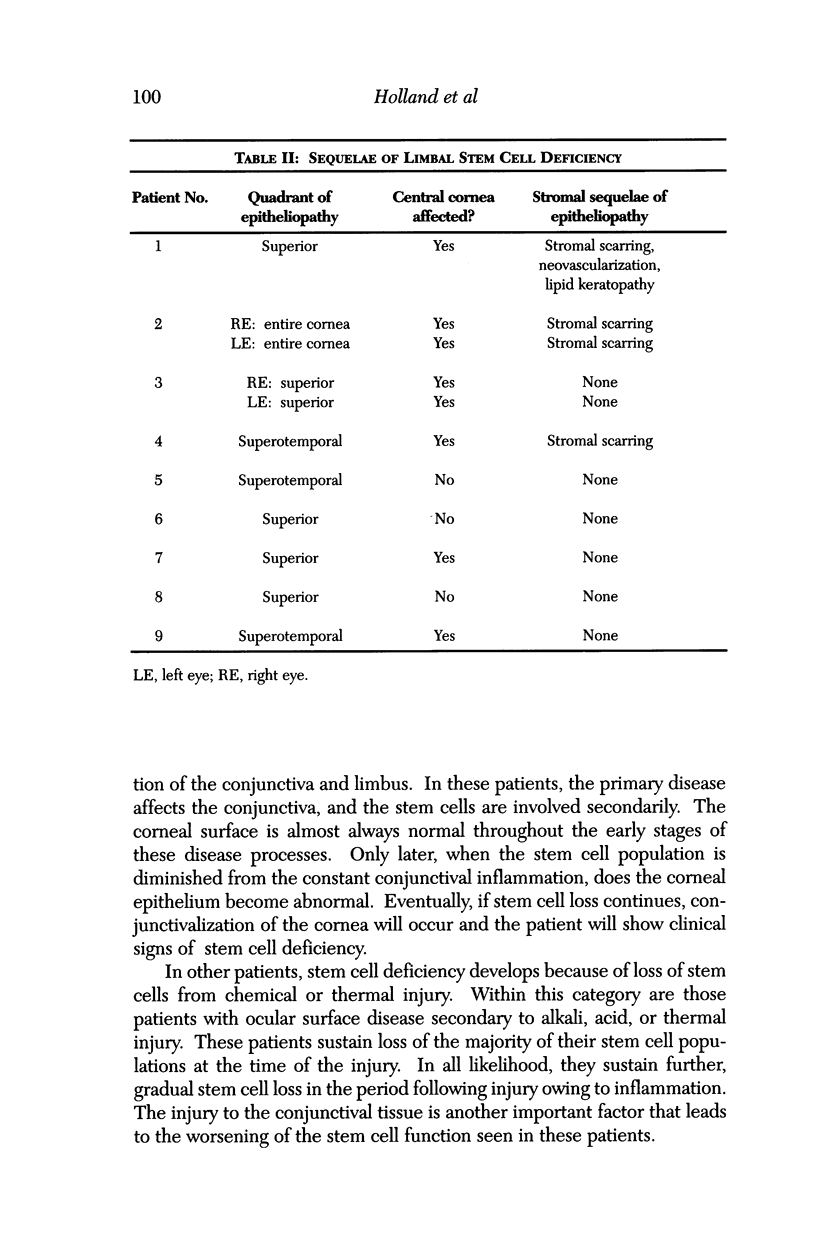
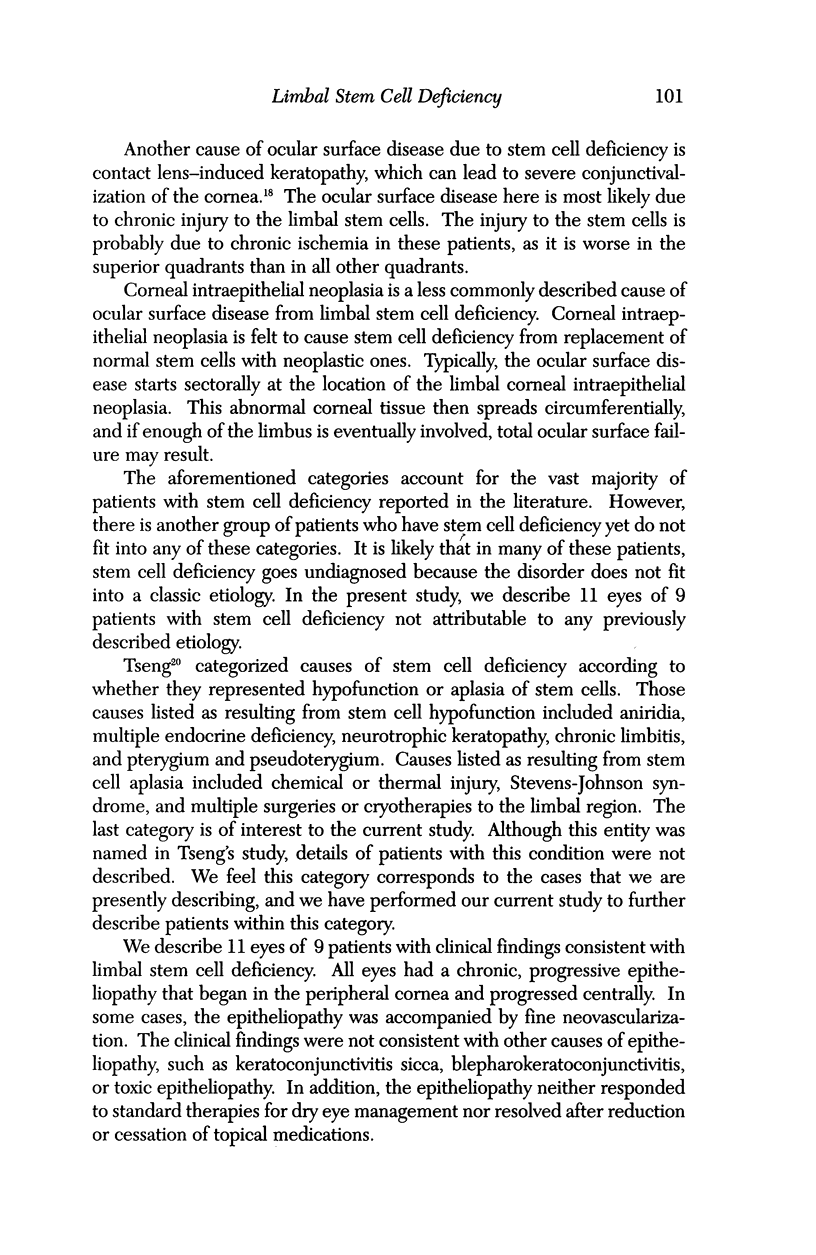

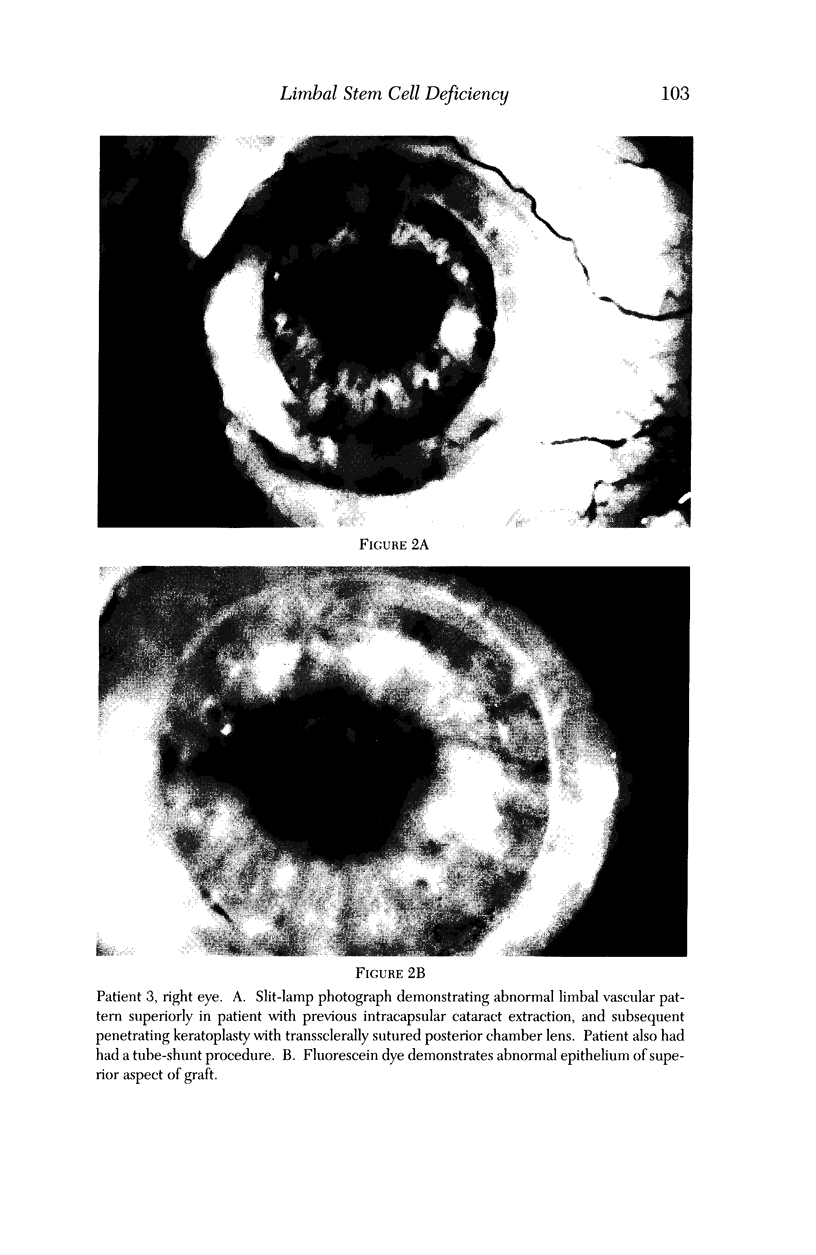
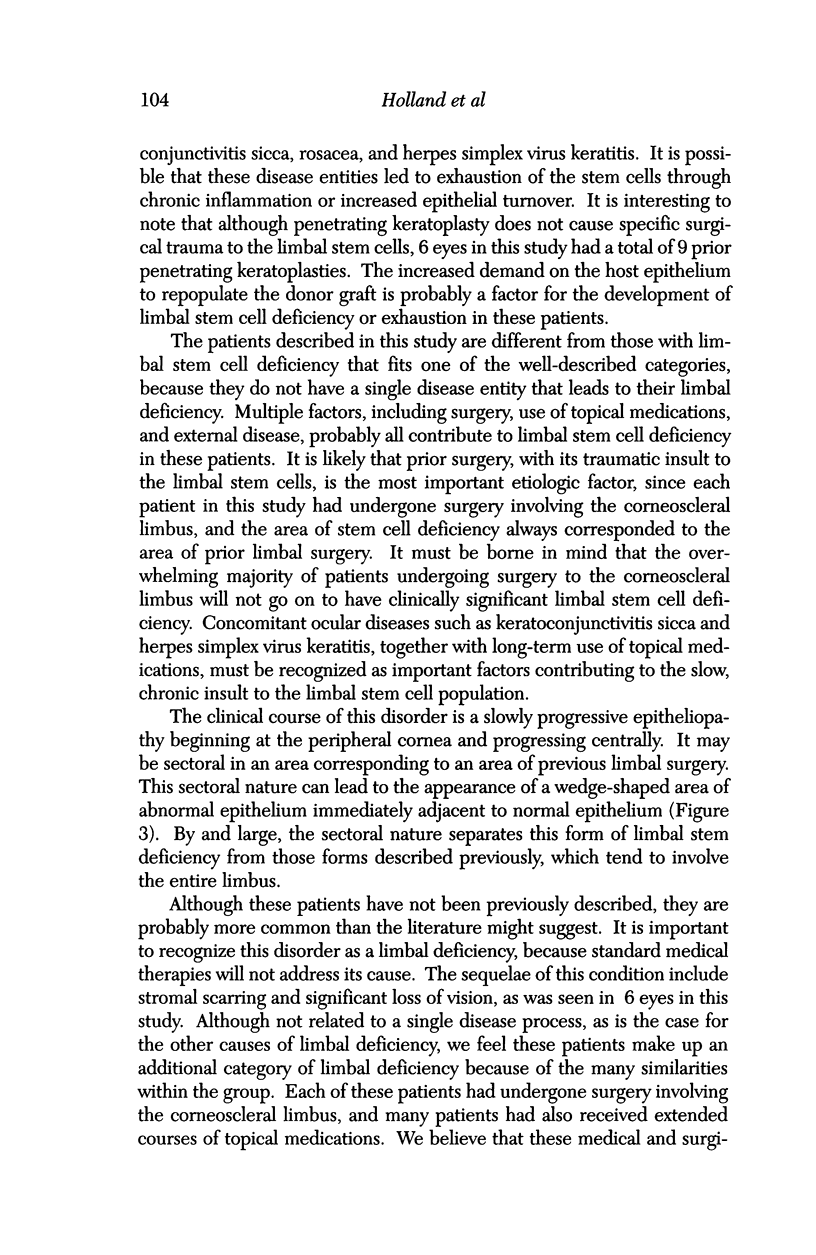
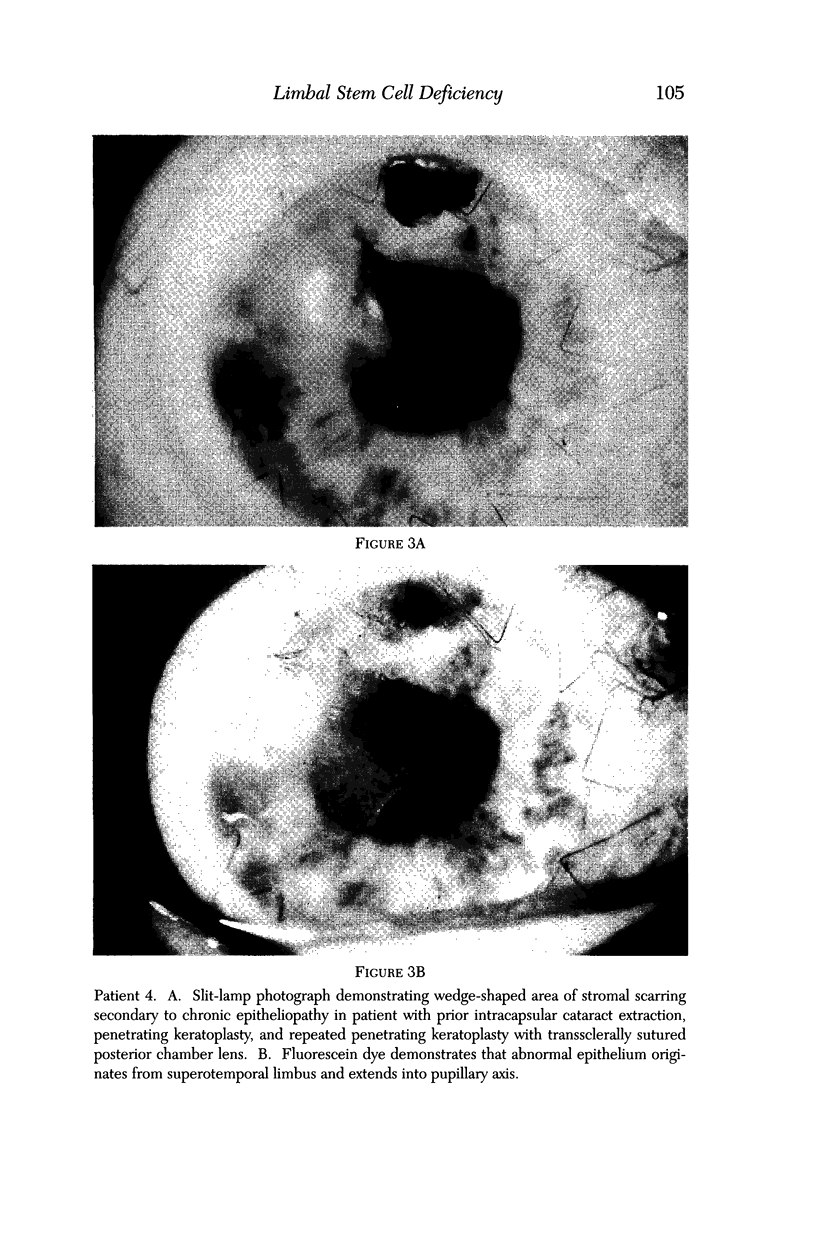
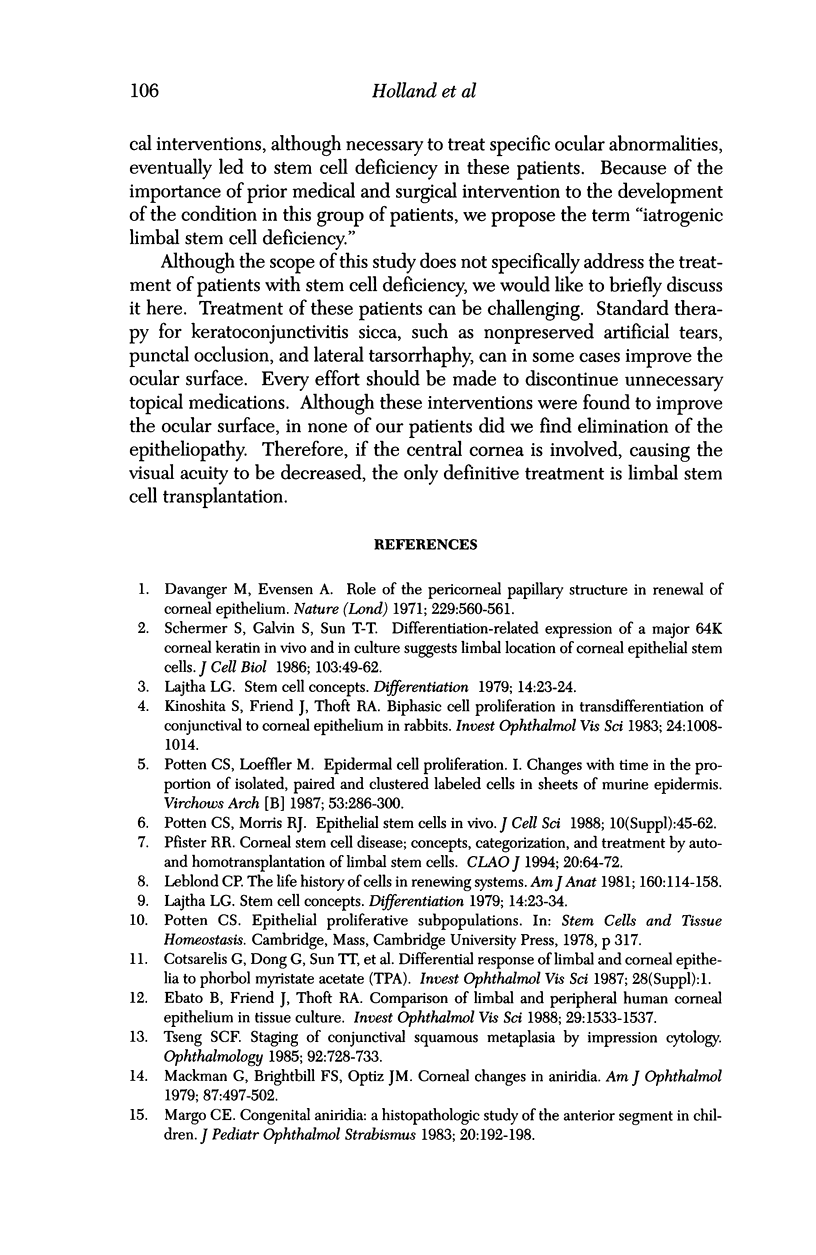
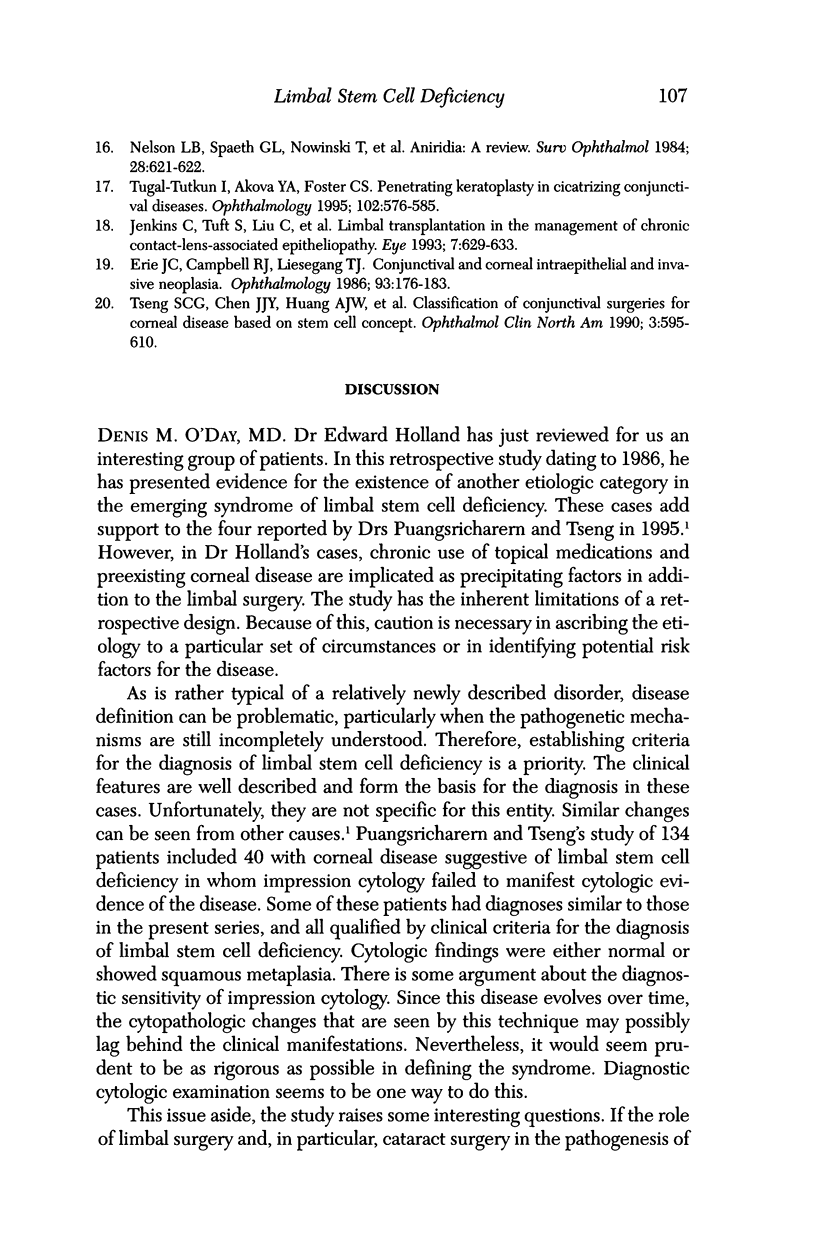

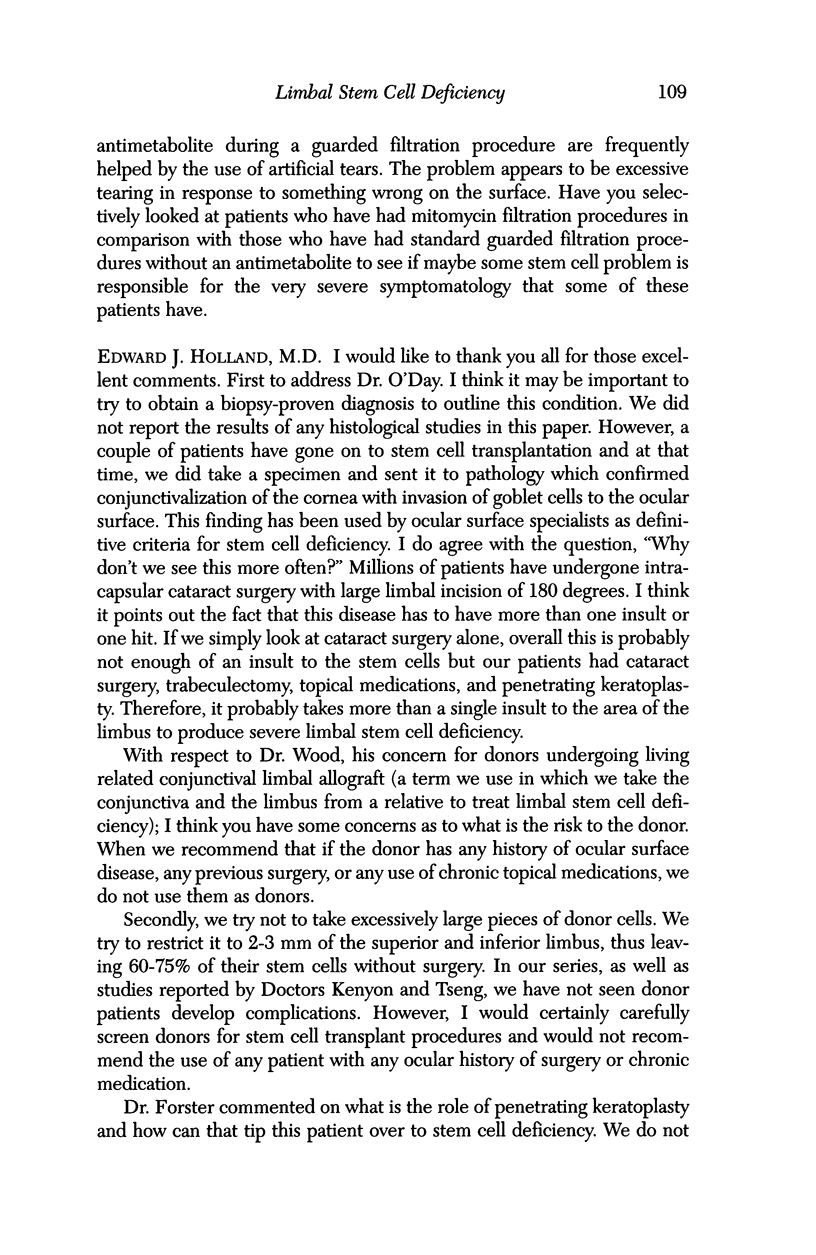

Images in this article
Selected References
These references are in PubMed. This may not be the complete list of references from this article.
- Davanger M., Evensen A. Role of the pericorneal papillary structure in renewal of corneal epithelium. Nature. 1971 Feb 19;229(5286):560–561. doi: 10.1038/229560a0. [DOI] [PubMed] [Google Scholar]
- Ebato B., Friend J., Thoft R. A. Comparison of limbal and peripheral human corneal epithelium in tissue culture. Invest Ophthalmol Vis Sci. 1988 Oct;29(10):1533–1537. [PubMed] [Google Scholar]
- Erie J. C., Campbell R. J., Liesegang T. J. Conjunctival and corneal intraepithelial and invasive neoplasia. Ophthalmology. 1986 Feb;93(2):176–183. doi: 10.1016/s0161-6420(86)33764-3. [DOI] [PubMed] [Google Scholar]
- Jenkins C., Tuft S., Liu C., Buckley R. Limbal transplantation in the management of chronic contact-lens-associated epitheliopathy. Eye (Lond) 1993;7(Pt 5):629–633. doi: 10.1038/eye.1993.145. [DOI] [PubMed] [Google Scholar]
- Kinoshita S., Friend J., Thoft R. A. Biphasic cell proliferation in transdifferentiation of conjunctival to corneal epithelium in rabbits. Invest Ophthalmol Vis Sci. 1983 Aug;24(8):1008–1014. [PubMed] [Google Scholar]
- Lajtha L. G. Stem cell concepts. Differentiation. 1979;14(1-2):23–34. doi: 10.1111/j.1432-0436.1979.tb01007.x. [DOI] [PubMed] [Google Scholar]
- Lajtha L. G. Stem cell concepts. Differentiation. 1979;14(1-2):23–34. doi: 10.1111/j.1432-0436.1979.tb01007.x. [DOI] [PubMed] [Google Scholar]
- Leblond C. P. The life history of cells in renewing systems. Am J Anat. 1981 Feb;160(2):114–158. doi: 10.1002/aja.1001600202. [DOI] [PubMed] [Google Scholar]
- Mackman G., Brightbill F. S., Optiz J. M. Corneal changes in aniridia. Am J Ophthalmol. 1979 Apr;87(4):497–502. doi: 10.1016/0002-9394(79)90238-1. [DOI] [PubMed] [Google Scholar]
- Margo C. E. Congenital aniridia: a histopathologic study of the anterior segment in children. J Pediatr Ophthalmol Strabismus. 1983 Sep-Oct;20(5):192–198. doi: 10.3928/0191-3913-19830901-06. [DOI] [PubMed] [Google Scholar]
- Nelson L. B., Spaeth G. L., Nowinski T. S., Margo C. E., Jackson L. Aniridia. A review. Surv Ophthalmol. 1984 May-Jun;28(6):621–642. doi: 10.1016/0039-6257(84)90184-x. [DOI] [PubMed] [Google Scholar]
- Pfister R. R. Corneal stem cell disease: concepts, categorization, and treatment by auto- and homotransplantation of limbal stem cells. CLAO J. 1994 Jan;20(1):64–72. [PubMed] [Google Scholar]
- Potten C. S., Morris R. J. Epithelial stem cells in vivo. J Cell Sci Suppl. 1988;10:45–62. doi: 10.1242/jcs.1988.supplement_10.4. [DOI] [PubMed] [Google Scholar]
- Schermer A., Galvin S., Sun T. T. Differentiation-related expression of a major 64K corneal keratin in vivo and in culture suggests limbal location of corneal epithelial stem cells. J Cell Biol. 1986 Jul;103(1):49–62. doi: 10.1083/jcb.103.1.49. [DOI] [PMC free article] [PubMed] [Google Scholar]
- The Association for Research in Vision and Ophthalmology. Annual spring meeting. Sarasota, Florida, May 4-8, 1987. Abstracts. Invest Ophthalmol Vis Sci. 1987 Mar;28(3 Suppl):1–430. [PubMed] [Google Scholar]
- Tseng S. C. Staging of conjunctival squamous metaplasia by impression cytology. Ophthalmology. 1985 Jun;92(6):728–733. doi: 10.1016/s0161-6420(85)33967-2. [DOI] [PubMed] [Google Scholar]
- Tugal-Tutkun I., Akova Y. A., Foster C. S. Penetrating keratoplasty in cicatrizing conjunctival diseases. Ophthalmology. 1995 Apr;102(4):576–585. doi: 10.1016/s0161-6420(95)30980-3. [DOI] [PubMed] [Google Scholar]







